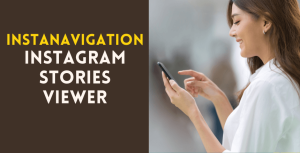
A UX (user experience) designer focuses on improving the overall experience a user has with a product, such as a website, mobile app, or other software. The work of a UX designer spans many areas. Here’s an overview of some of their main responsibilities:
Conduct User Research
One of the first steps in any UX design process is to understand the target users and their needs. UX designers conduct user research to gain insights into how real users think, feel and behave when interacting with a product. Common user research methods include:
- Surveys and questionnaires
- Interviews
- User testing
- Personas and empathy maps
The findings from user research help guide design decisions to create a product that is useful, usable and satisfying for users. Good user research ensures the product solves the right user problems.
This may sound difficult, but if you study for an MPS in UX design at Maryland College of Art and Design, you’ll learn how to do this effectively.
Information Architecture
UX designers structure and organize a product to help users find information and complete tasks. This includes defining:
- The content that will go in the product
- The hierarchy and relationships between different types of content and features
- The navigation system and menus
Good information architecture removes confusion and helps users quickly find what they need. It also allows for easy future growth and additions to the product.
Wireframing and Prototyping
UX designers create wireframes as low-fidelity sketches to outline what interface elements and content will go on each page. This helps define the overall workflow and structure of the product.
They then design interactive prototypes that simulate the look and function of the final product. Prototypes allow designers to test concepts with users for feedback. Iterating on prototypes is faster and cheaper than changing a live product.
Visual Design
While UX designers focus on functionality and the user flow, visual designers concentrate on the aesthetics and style. UX designers may collaborate with graphic designers and create style guides to inform the visual design. Attractive visual design increases users’ perceptions of usability.
Usability Testing
UX designers test prototypes with real users to identify usability issues and pain points. Based on feedback, they iterate designs to improve the experience. Usability testing is done in the early stages and throughout the design process to continually refine the product.
Interaction Design
UX designers create the interactions between users and the product, such as how users navigate, input information and respond to feedback. The interactions need to be intuitive and enable users to complete their goals. Every micro-interaction is thoughtfully designed.
Accessibility
To ensure the product can be used by everyone, UX designers consider diverse users’ needs. They aim to adhere to accessibility guidelines and requirements. Designing for accessibility benefits all users.
Reporting Findings
UX designers document their research and design recommendations in reports. They present findings to stakeholders using data to back up their design decisions. Clear reporting and communication skills help drive product strategy.
The work of a UX designer is varied and touches many aspects of a digital product. Their ultimate goal is to create enjoyable, easy-to-use experiences for all users.






